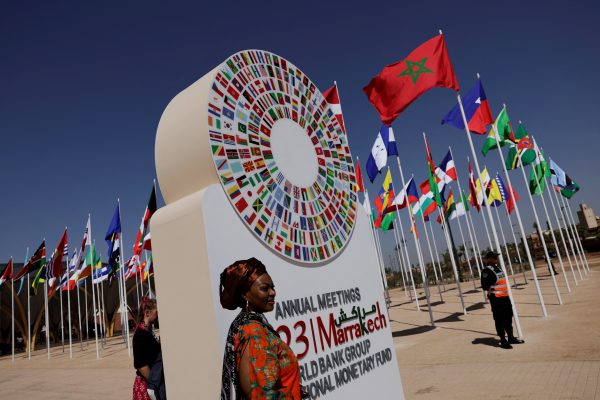SDRs function as a universally accepted international reserve asset that can be exchanged with hard currencies and used outside of the IMF for different purposes. Each member’s SDR holdings serve as a credit line that can be drawn down at their discretion. The cost of using these funds is a weighted average of short-term interest rates on the five SDR currencies — the US dollar, the euro, the yen, the British pound and, since 2015, the Chinese yuan. In 2021, this cost was virtually zero.
The SDR allocation in 2021 meant that all IMF members obtained increased access to cheap credit with no strings attached. Since SDRs are allocated proportionately to members’ ‘quotas’ — their capital contribution to IMF — a large share of this allocation went to high-income countries that did not need additional international liquidity. The share that went to low-income countries was small, reflecting their respective quotas. Yet even these countries received a sizable amount of SDRs relative to their economic size, worth roughly 2 per cent of their GDP.
A measure like this was unlike the IMF, which is known for attaching tough policy conditionality to the credit it offers its members. The measure was criticised by some conservative commentators, who cited numerous drawbacks and risks. The universality and quota-proportionality of SDR allocation also make it an unsuitable tool for providing liquidity support as each country’s needs can vary. Still, the IMF, like many governments and international organisations, had to demonstrate its readiness to help the world cope with the adverse economic consequences of COVID-19.
At the time of the allocation, the IMF promised to produce a report assessing the measure’s costs and benefits two years later, which was published in August 2023.
The assessments presented in the report are generally positive. Cynically, this might be expected because the grade report was produced by the graded party. But such cynicism is not necessarily warranted, because if SDR allocation were found to work too well, it could potentially undermine the IMF’s core mandate of providing loans with conditionality.
IMF-mandated policy adjustments are both politically and economically painful for member countries, so they would prefer to use SDRs. Since SDR allocation is virtually costless administratively, it might also be considered a more efficient tool to help member countries.
In reality, individual IMF members do not have the choice between more SDRs or a typical IMF program. While SDR allocation is universal across all members, IMF programs are country-specific and tailored to each country’s circumstances. Yet, a question should be raised as to why the IMF does not further increase SDRs across the board to strengthen every member’s resilience to economic and financial shocks.
The key issue is how the 2021 SDR allocation has affected member countries’ economic policies. It is impossible to objectively determine whether it has unduly loosened their policy discipline and led to excessive public spending. So, the IMF conducted a survey for country authorities and IMF country teams to see how they perceive the measure’s influence.
The results, shown in the report’s background paper, indicate a considerable divide between country authorities and IMF staff. While nearly all country authorities responded that the allocation had not negatively affected their policy discipline, a non-negligible minority of IMF staff considered that it caused a delay in needed macroeconomic adjustment or reforms.
But member countries have been struggling to deal with the ongoing economic consequences of COVID-19, so some delay in policy adjustments and reforms is inevitable and may even be desirable. The survey result seems to suggest that the SDR allocation’s adverse impact on member countries’ policies has been benign so far.
Does this mean that SDR allocation can replace some or even many cases of traditional IMF credit? The ex-post assessment report is silent on this question, but an IMF blog post indicates their awareness of the issue. After summarising the report’s broadly positive assessments, it says an SDR allocation is ‘not a silver bullet’ and must be viewed as part of a broader range of support measures, including policy advice, financial support and technical assistance.
The historic 2021 SDR allocation has proven reasonably effective and become a useful part of the global financial safety net. Still, other tools need to be used as well. In this context, the successful completion of the ongoing negotiations on the IMF’s 16th General Review of Quotas is crucial, as it enhances IMF’s ability to extend traditional credit.
Masahiko Takeda is Senior Fellow in the Australia–Japan Research Centre at the Crawford School of Public Policy, The Australian National University.

